The content of the article
Rats are not stopped by thick walls and a strip foundation. They make digs and gnaw the road to the chicken coop, because there pests are waiting for food, eggs and small chicks. Tailed invaders spread rabies and worms, destroy masonry and scare the bird. How to get rid of rodents without harming chickens and other birds? To resort to proven folk methods or use modern drugs and repellent devices.
100% result
Pesticides destroy rat families in 5–10 days. The rodents that eat the poison die instantly or after a few days, but not a single tailed invader survives after such a dinner. Any drug will do:
- Zinc;
- Phosphide;
- Rats;
- Zoocoumarin;
- Bitrex
- Rat death.
The poison is mixed with fish or meat, added to the seeds. Not all rodents die on the spot. Some rats manage to hide in the attic or under the floor, and after death they decompose and spread the infection. To protect people and pets, it is recommended to buy products with a mummifying effect.
Rats are smart. They send intelligence young and stupid males who try food. If the tailed taster dies within a few hours, the rest of the rodents bypass the bowl with the poisoned meat or sunflower seeds side.
How to make all pests try a pesticide? Buy Goliath means. The drug is activated after 10 days. In rats, oxygen starvation begins, due to which they lose their mind and try to escape away from the chicken coop, and then die.
How to protect a bird
Poisonous baits attract not only rodents, but also chickens. There are two ways: temporarily transfer the bird to another agricultural building or make a special trap. You will need a wooden box with a convertible top. Holes with a diameter of 6–8 cm are made in the side walls so that an adult well-fed rat can climb through them. There must be two or more holes, because rodents avoid enclosed spaces.
A bowl of poisonous food is put in a box. The lid is sprinkled with straw, so that the chickens are not afraid to sit on a trap, then the rodents will have less reason for mistrust. The bait is checked daily and the corpses of pests are thrown away, because they scare away the rest of the tailed ones.
The method will not work if small chicks live in the chicken coop. They will easily crawl inside and try the poisoned food. It is better to buy the granular preparation "Ratid", which is safe for poultry.
Pesticides are not used if cats live in the yard. They can eat the corpse of a rodent and poison. Preparations are replaced by ultrasonic devices or alternative methods.
Important: Do not touch any, even safe, means with bare hands. Rats will smell human smell and not touch pesticides. Wear rubber gloves or a plastic bag.
Repellers
Sorry to kill rats? Animals need to be scared away by installing an ultrasound-emitting device in the chicken coop. It acts on the central nervous system of rodents, causing them a sense of danger. Tailed guests try not to enter the chicken coop and gradually disappear.
How to use a repellent device? A compact radiator is hung under the ceiling at an altitude of 1–1.5 m from the ground. They are plugged in, sent to holes in the floor or the center of the chicken coop. The device works around the clock, but so that rodents are not used to it, it is recommended to choose options with a timer. They turn off and on unexpectedly, so the rats cannot adapt or choose a good time to steal eggs. In large chicken coops, several emitters are installed.
Important: Do not cover or cover rat holes. Rodents, who have nowhere to retreat, go crazy with ultrasound and can attack an adult bird and even people.
Lures and natural remedies
A simple way to get rid of tailed pests is wood ash. Large pieces are crushed, powder is sprinkled on the floor in the chicken coop and the ground around the building. Small particles stick to the rat's paws, and when the animal begins to lick, they enter the stomach. Ash irritates the mucous membrane of the digestive organs and causes discomfort.
If you sprinkle such powder on the chicken coop floor daily, the rats will stop coming in, and after 2-3 weeks they will leave the yard. Hens, on the contrary, love to wallow in ashes. The tool cleans their feathers from lice and other parasites. The method is safe for chicks.
Bad smell
If the rodents have become too arrogant, and the owner of the chicken coop is ready to go to extreme measures, you will need one or more rat carcasses. The bird is driven out into the street, the corpse of the pest is placed on a shovel or pitchfork, watered with gasoline and set on fire. After 20-40 seconds, they are extinguished. A smoking carcass fumigates the entire room. Charred rodents can be placed next to burrows so that the tailed invaders not only hear the smell of burning wool, but also see its source.
After this treatment, the pests disappear after 1-2 days and do not appear on the site for a long time.
Plants from rodents
The smell of onions and ledum, as well as legumes, scares off rats. Do not like the tailed guests and burdock, which sticks to the wool and tears off badly. Branches of medicinal black root are laid out in the corners so that pests do not dig holes there.
You can make bouquets of burdock and elderberry. Rodents do not like the aroma of the plant, and if the chicken eats several ripe berries, nothing will happen to it.
A mixture of autumn colchicum seeds and sunflower or any cereal is poured into rat holes. The poisonous plant is odorless, so rodents do not distinguish it from ordinary porridge. Colchicum kills both pests and birds, so bowls with natural poison are put in a box or other places where hens do not reach.
Important: To prepare a mixture of poisonous seeds in rubber gloves, because the plant is dangerous to humans.
Killer snacks
Instead of pesticides, they put in a wooden box a container with wheat flour mixed with alabaster. The rat eats a mixture that makes her thirsty. A bowl of water is placed next to the workpiece so that the rodent can immediately drink. When the liquid enters the stomach of the pest, the alabaster swells and solidifies. The rat dies from indigestion. Instead of alabaster, gypsum is also used. But this method cannot be called humane, because the animal suffers for a long time.
The second option is a deadly snack made from sugar, wheat or rye flour, as well as lime. Mix the ingredients in equal amounts, pour into a bowl. Next to the first tank, put a second one, pour water into it.
Rodents like the smell and taste of sugar, so they eat the workpiece. Then the pest drinks water, lime reacts with the liquid and corrodes the walls of the stomach. The rat has no chance.
Alcohol and Rodents
If you do not need to kill, but simply scare away tailed guests, use alcohol or inexpensive vodka. In alcohol, soak slices of rye bread or crumbs. Wheat baking will not work, it is not so fragrant, so it does not interrupt the smell of alcohol.
Vodka is regularly added to the bowl and bread is added so that the rodents remain drunk. Rats leave the chicken coop after 5-7 days.
Bowls with rye porridge are hidden in hard-to-reach places so that the chicken does not glue the workpiece. Birds who have tried refreshments with vodka fall into a sound sleep.
Biological weapons
A cat is able to clean the chicken coop and other agricultural buildings from rodents. The choice of an animal is approached responsibly.It is advisable not to take thoroughbred pets that are scared even of mice, and run away from rats at the speed of light. Hunting instincts are endowed with bald sphinxes, but in winter they are of little use.
Cats are recommended to be picked up from the street, because homeless animals are bolder than domestic ones. Take a teenager or adult pet who will immediately get to work.
You can bring a furry guard from friends, but be sure to look at the parents. If the mother is small and fast, rarely enters the house and regularly brings mice to the owners, then her skills are transferred to the children. It’s good if there were Siberian cats in the pet’s family. They are considered natural hunters and enemies of all rodents.
How to recognize a Pied Piper in an adult cat? Look at his upper fangs. Usually they are long, protrude from under the lip. Predatory cats are usually large and massive, and cats are flexible and nimble.
Rats are destroyed and some dog breeds:
- Fox Terriers
- bull terriers;
- dachshunds.
Animals are left in the chicken coop for the whole night, so it is important to make sure that the cat or dog does not want to eat chicken or an adult chicken. If the protector is indifferent to the birds, you can not worry. While the pet is in the chicken coop, not a single rat dares to get in there.
Cunning traps
How to catch a rodent if there is no cat in the house? Buy a trap. They come in classic wood and modern electric. A strong-smelling bait is placed in a trap:
- hard or cream cheese;
- piece of jerky;
- sausage;
- fat.
When the rodent approaches the bait, a mechanical trap presses it with an iron arc. An electric trap is shocking. The rodent receives such a powerful charge that his heart stops immediately. Manufacturers claim that the electric trap is safe for poultry and cats.
Rat traps can be made at home from old flower pots, broken cans, or plastic bottles.
Option 1
- You will need a three-liter glass jar or a large plastic glass. A clay flower pot is also suitable.
- Attach a piece of cheese or meat to the bottom of the container.
- Turn the pot upside down. Lift one side, put a stick or coin.
The rat, smelling food, runs inside, hitting the stand. The wand falls, the pot covers the rodent. The trap is mounted on a sheet of iron so that the caudate pest cannot dig a hole and get out.
Option 2
- Cut off the neck of a two- or five-liter bottle.
- Put the container on a box or other elevation. The bottom should hang, but so that the trap does not fall ahead of time, it is crushed by a small pebble or wooden block.
- Put food in a bottle, leave it overnight.
The mechanism is simple: a rat, smelling cheese, runs into a bottle. Capacity due to the weight of the rodent falls, landing at the bottom. A caudate pest cannot climb slippery walls and remains trapped. And so that the bottle falls correctly, next to the inlet, you can make two holes and thread the ropes through them. It remains to attach the trap to a pillar or something else and wait.
Option 3
In the old can, make a hole with a diameter of 6 to 10 cm. Dig a hole in the chicken coop, put a container in it and sprinkle with earth, leaving only the hole outside. At the bottom there should be a bait for the rat to climb inside.
What to do with a caught rodent? Give it to a cat or put in a cage. If you let the rat out of the yard, she will return.
Tailed pests are smart and resourceful, so getting rid of intruders is difficult. You need to fight rodents in several ways at once: set traps, sprinkle pesticides, scare away ultrasonic devices. And when the pests disappear, it is advised to have a Pied Piper cat so that they no longer appear.
Video: rat and mouse trap

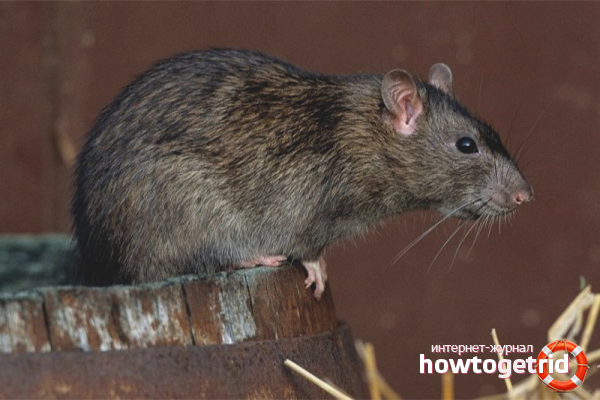

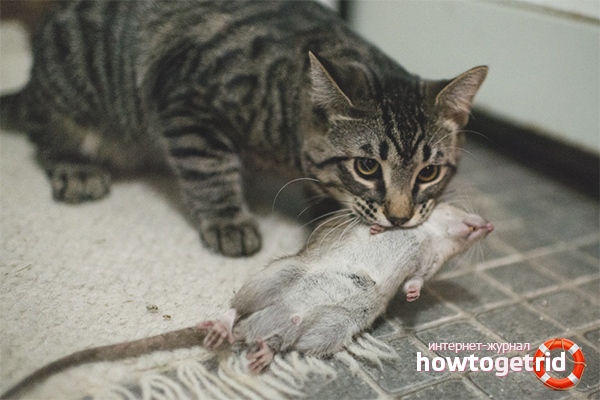
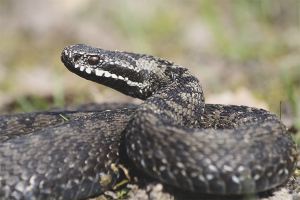
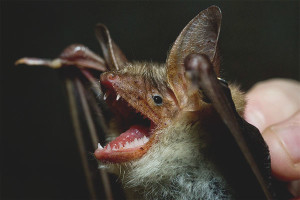
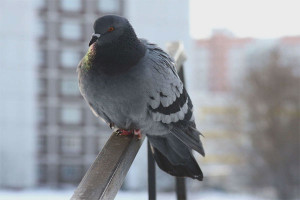




Submit